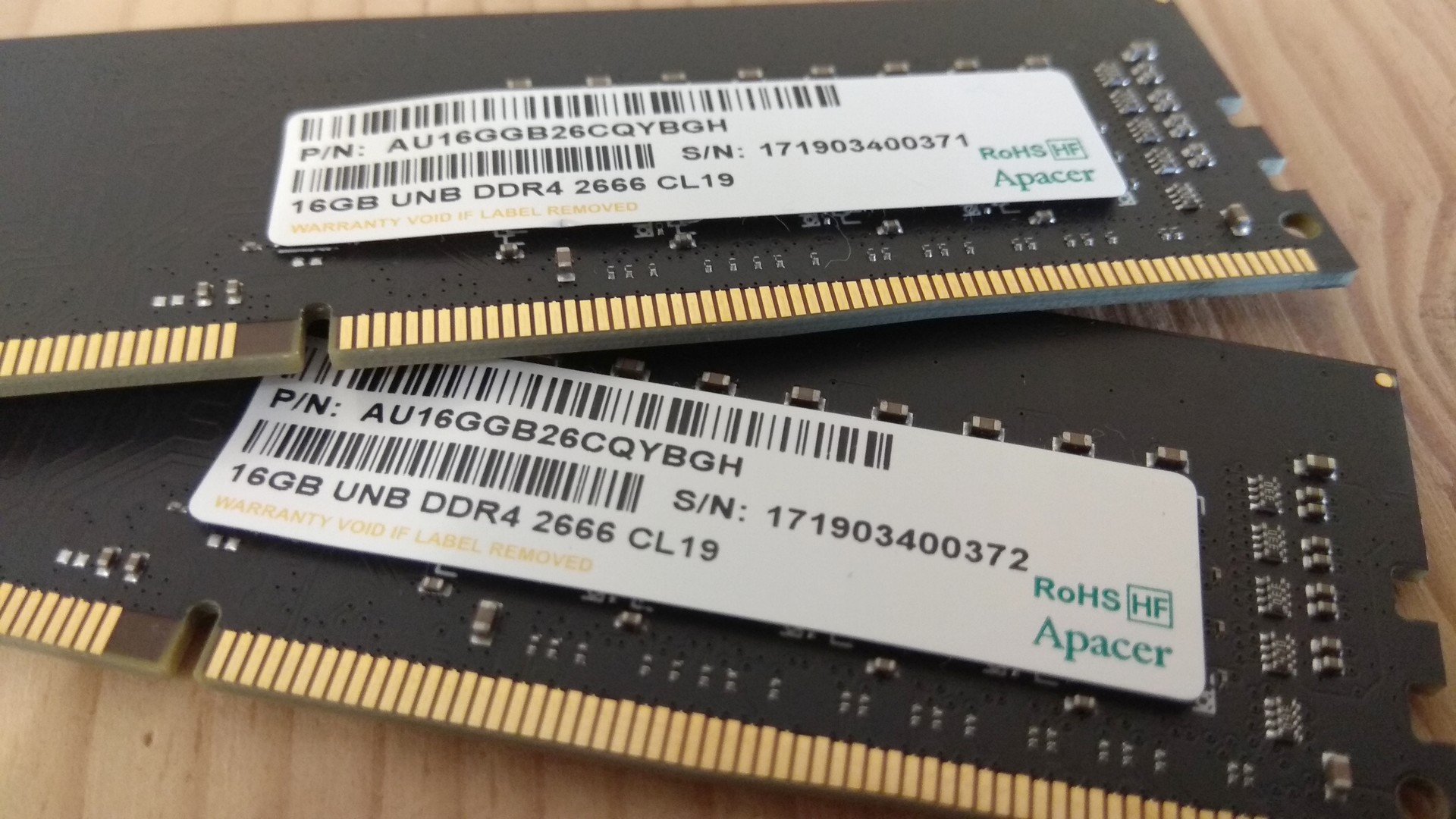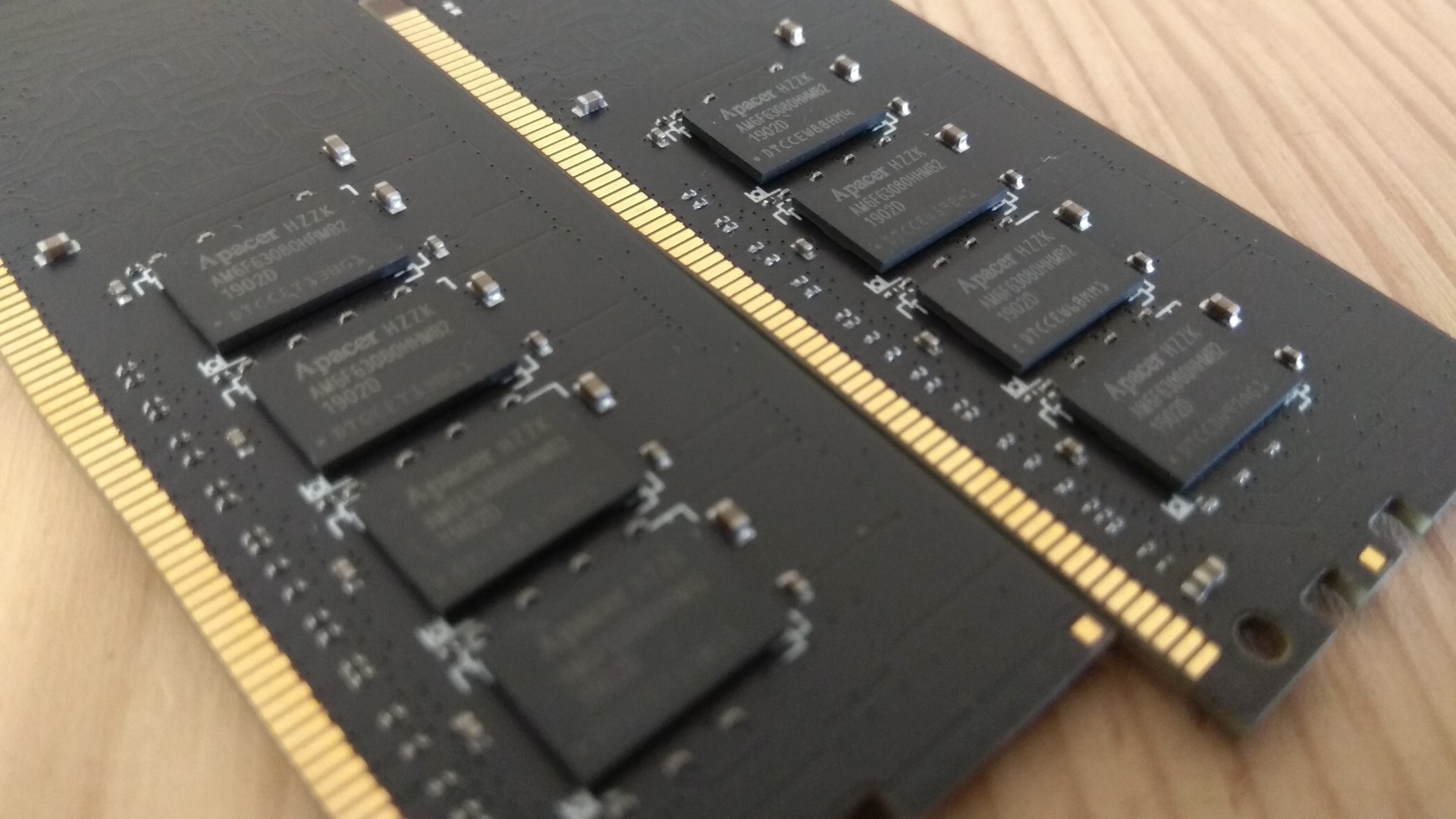Single-rank or dual-rank RAM?
We independently test the products and technologies that we recommend.

Single Rank vs Dual Rank
The memory rank is the number of arrays of memory chips with a capacity of 64 bits each, soldered on one memory module. Simply put, these are two virtual modules on one physical one. The most common are single-rank (Single Rank) and dual-rank memory strips (Dual Rank), but occasionally there are also four-rank (Quad Rank).
Reluctantly, an analogy with the physical and virtual processor cores suggests itself — Intel Hyper-Threading and AMD SMT. There is indeed a certain similarity: one dual-rank memory bar is faster than a single-rank one (Single Channel), but slower than two peers operating in dual-channel mode (Dual Channel).
 |
At the moment, the vast majority of DDR4 memory modules with a volume of 4 or 8 GB are single-rank (four or eight 1 GB chips are soldered), and 16 GB are dual-rank (sixteen chips, that is, two arrays). However, you can still find old 8-gigabyte dual-rank sticks (16 low-density 512 MB chips) on the market.
 |
And with the advent of the first chips with an increased density of 2 GB, single-rank 16-gigabyte modules (one array of 8 chips) and dual-rank 32-gigabyte modules (16 chips) began to go on the market. Four-rank 32-gigabyte strips (32 chips, four arrays) are quite a curiosity.
Simply put, if there are up to eight chips on a memory bar, it is single-rank, and if there are sixteen, it is dual-rank. We have more or less figured out the theory, but now we will conduct practical testing on the example of a couple of dual-rank 16-gigabyte Apacer DDR4 modules with a total volume of 32 GB.
Apacer DDR4 is a series of low-cost RAM for modern Intel LGA1151-v2 and AMD AM4 computer platforms. The textolite of models with a frequency of 2133 and 2400 MHz is painted in old-school green, and 2666-MHz models are in a more modern black. There are 4, 8 and 16 GB models to choose from. The first two options are single-rank, while the last one is dual-rank.
There are no ready-made factory sets for two or four modules, only separate strips. Therefore, if you plan to do overclocking, we advise you to buy in one store and at one time. So that for sure there are chips from the same batch with approximately the same current leakage coefficient and overclocking potential.
Perhaps the most interesting are the Apacer DDR4 sticks with a capacity of 16 GB and a frequency of 2666 MHz. They are built on sixteen Hynix A-die chips (according to the Thaiphoon Burner application), that is, they are dual-rank. A couple of these modules allow you to build a PC on an AMD Ryzen processor with a high bandwidth memory subsystem — dual-channel and dual-rank at the same time.
However numerous chips increases the load on the memory controller built into the processor. Because of this, the memory frequency that can be squeezed out of the memory by manual overclocking will be lower, and the timings (delays), on the contrary, will be higher. Even by default, the Apacer DDR4-2666 16 GB runs on CL19 timings instead of the typical CL17 timings.
But still Apacer DDR4 captivates with almost the best ratio of price and volume on the market. Fast memory is required for a relatively narrow range of applications, but a lot of RAM is required for a much wider range. And to pay almost double the amount for a 2x16GB overclocker kit, like Apacer Commando DDR4 EK.32GAT.GEAK2 , only avid computer enthusiasts would agree.
 |
Test bench configuration
- processor — AMD Ryzen 3 Raven Ridge 2200G BOX ;
- cooler — boxed;
- motherboard — Biostar B450GT3 Ver. 6.x ;
- RAM — Apacer DDR4-2666 2x16GB;
- graphics card — integrated;
- solid state drive — Apacer AS2280P2 AP480GAS2280P2-1 480 GB ;
- HDD — Seagate BarraCuda Compute ST2000DM008 2 TB 256/7200 Price from 2 399 up to 4 865 ₴;
- power unit — Cougar CMX CMX850 ;
- frame — Cougar Turret RGB black .
 |
Benchmark results
For comparative testing of single-rank and dual-rank modules, the most sensitive processor to memory bandwidth, the Ryzen 3 2200G, was deliberately chosen. In his case, the memory bus is divided between four Zen processing cores and an integrated Vega 8 graphics accelerator with 512 microcores. No additional discrete graphics card was used.
 |
As expected, it was not possible to set overclocker records with the dual-rank Apacer DDR4 — it overclocked from the base 2666 to only 2933 MHz, which, by the way, is also not bad. Usually, you can squeeze out a hundred or two megahertz more from single rank modules. However, this limitation may also be the fault of the Biostar B450GT3 motherboard with a still damp BIOS firmware.
 |
Testing was carried out in the AIDA64 application, or rather the memory and cache benchmark built into it, as well as in an old game, but just well suited for an integrated graphics card — Tomb Raider (2013) at FullHD resolution and high graphics settings. It also has a built-in benchmark, which runs the same demo scene over and over again, which minimizes the error in frame rate measurements.
 |
Thus, the speed of reading, writing and copying Apacer DDR4 2666 MHz dual RAM memory in the AIDA64 benchmark turned out to be about 7 percent faster than that of a single rank memory with a similar frequency. Manual overclocking to 2933 MHz added about 5 percent more performance. For the same 5 percent, dual-rank memory has lower latency, that is, delays measured in nanoseconds.
 |
The frame rate in the game Tomb Raider in the case of dual-rank memory was even a little, only 2 fps, but consistently higher than the single-rank one. Another couple of frames per second added memory overclocking. More free FPS can be obtained by overclocking the integrated Vega 8 graphics card in the core. But for this, at least a small tower cooler is desirable, while for the sake of the purity of the experiment, we tested it on a boxed one.
 |
findings
As testing has shown, dual-rank RAM modules (with two virtual memory channels) are unambiguously faster than single-rank ones at an equal frequency — the gain is from 5 to 7 percent. The numbers seem to be small, but getting a boost in memory performance is always harder than any other PC component. If you are too lazy to bother with overclocking, then buying dual-rank modules is the easiest and most effective way to speed up the PC memory subsystem. And in the case of processors with powerful integrated graphics (AMD Vega and Intel Gen11), dual-rank memory is a must-buy.
Articles, reviews, useful tips
All materials

























